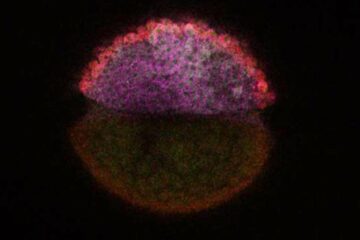Bacteria manage perfume oil production from grass

Studying the root of the tropical Vetiver grass through interdisciplinary research, the microbiologists Pietro Alifano and Luigi Del Giudice, the plant biologist Massimo Maffei and their colleagues found that Vetiver root cells produce a few oil precursors, which are then metabolised by the root bacteria to build up the complexity of the Vetiver oil. The bacteria were found in the oil-producing cells as well as in root locations that are closely associated with the essential oil.
The Vetiver grass is the only grass cultivated specifically for its root essential oil, which is made up of chemicals called sesquiterpenes. These are used in plants as pheromones and juvenile hormones. The essential oils also contain alcohols and hydrocarbons, which, together with the sesquiterpenes are primarily used in perfumery and cosmetics. The perfumery and flavouring industry could benefit from the increased variety that these bacteria provide to the smells and tastes of these oils.
The bacteria responsible for this transformation include alpha-, beta- and gamma-proteobacteria, high-G+C Gram-positive bacteria as well as microbes which belong to the Fibrobacteres / Acidobacteria group.
“This research opens new frontiers in the biotech arena of natural bioactive compounds” said Professor Alifano “Pharmaceutical, perfumery and flavouring industries may now exploit the selected microbial strains and widen their metabolic libraries”.
“The ecological role of plant-microbial associations shows another fascinating aspect” said Professor Maffei “The metabolic interplay between a plant, which offers a few simple molecules, with root bacteria, that biotransform them into an array of bioactive compounds, increases fitness and reveals new cost-efficient survival strategies”
Media Contact
All latest news from the category: Life Sciences and Chemistry
Articles and reports from the Life Sciences and chemistry area deal with applied and basic research into modern biology, chemistry and human medicine.
Valuable information can be found on a range of life sciences fields including bacteriology, biochemistry, bionics, bioinformatics, biophysics, biotechnology, genetics, geobotany, human biology, marine biology, microbiology, molecular biology, cellular biology, zoology, bioinorganic chemistry, microchemistry and environmental chemistry.
Newest articles

Attosecond core-level spectroscopy reveals real-time molecular dynamics
Chemical reactions are complex mechanisms. Many different dynamical processes are involved, affecting both the electrons and the nucleus of the present atoms. Very often the strongly coupled electron and nuclear…

Columbia researchers “unzip” 2D materials with lasers
The new technique can modify the nanostructure of bulk and 2D crystals without a cleanroom or expensive etching equipment. In a new paper published on May 1 in the journal…

Decoding development: mRNA’s role in embryo formation
A new study at Hebrew University reveals insights into mRNA regulation during embryonic development. The study combines single-cell RNA-Seq and metabolic labeling in zebrafish embryos, distinguishing between newly-transcribed and pre-existing…





















